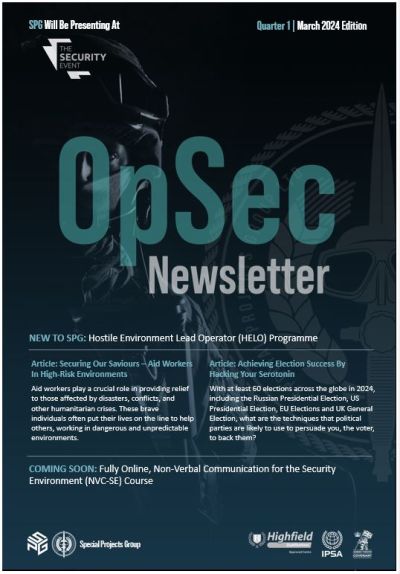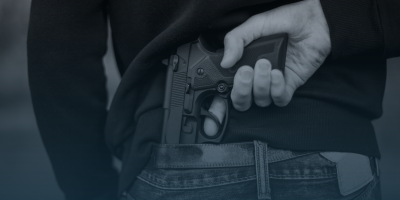Non-Verbal Communication for Frontline Personnel
Make an Enquiry
Non-Verbal Communication for Frontline Personnel (NVC-FLP) Course
This course is designed to build on the wider N-VSAT Programme and further enhance skills in Non-Verbal Communication (NVC). This course will not only expand on the basics of NVC, but also delve into more advanced techniques that are crucial for frontline personnel. Whether you are a Door Supervisor, Close Protection Operator, or a member of a Military Unit or Law Enforcement Agency, working in high-threat environments requires not only physical training, but also effective communication skills. Our NVC-FLP course will equip you with the tools and strategies to quickly assess situations, build rapport, de-escalate threats, and ultimately keep yourself and your team safe.
Read & Interpret Non-Verbal Cues
Through the use of our state-of-the-art NVC-FLP Course, you will learn how to read and interpret non-verbal cues with accuracy and precision. This system has been proven to enhance the performance of frontline personnel in real-world situations. With our training, you can expect to take your NVC skills to new heights and improve your overall ability to perform.
De-Escalation and Prevention of Threats
Operating on the frontline requires you to use your intuition and skills to keep yourself and your team safe. The NVC-FLP Course is designed to enhance your ability to spot threats before they fully manifest , allowing you to take preventative action and potentially avoid dangerous situations. Additionally, effective NVC skills can help de-escalate conflicts, and maintain a calm working environment, reducing the risk of physical altercations and security-related incidents.
At the end of this course, you will have a deeper understanding of non-verbal communication and its importance in high-threat environments. You will also be equipped with practical strategies to effectively communicate and ensure the safety of yourself and your team.
Why Choose the NVC-FLP Course?
The NVC-FLP Course works on the individual skills needed to mitigate the threats associated with operating on the front line. This course is designed to enhance the operational effectiveness of Military, Law Enforcement, Emergency Services and front line security, and the skills you learn will enable you to interpret the nonverbal cues associated with threats and threatening behaviour, exploring hostile intent, duress, and deceit.
Course Learning Objectives
The following are the key course Learning Objectives:
1. Detecting Aggression and Hostile Intent
- Understand the concept of aggression and hostile intent, including different types and levels.
- Learn how to identify potential aggressive or hostile behaviours in individuals or groups.
- Develop skills to recognize verbal and non-verbal cues associated with aggression and hostile intent.
- Explore strategies for de-escalating a potentially aggressive situation before it escalates into violence.
2. Detecting Deceit
- Understand the concept of deceit, including different types and levels.
- Learn how to identify potential deceptive behaviours in individuals or groups.
- Develop skills to recognise verbal and non-verbal cues associated with deception.
- Explore techniques for eliciting truthful information from potentially deceptive individuals.
3. Detecting Duress
- Understand the concept of duress and how it can affect individuals.
- Learn how to identify signs of duress in others, including physical, behavioural, and psychological indicators.
- Develop strategies for addressing and diffusing situations involving duress.
4. Increasing Situational Awareness Through Situational Awareness Mechanisms
- Understand the importance of situational awareness in assessing potential threats and risks.
- Explore various mechanisms for enhancing situational awareness, such as scanning, observation, and monitoring.
- Learn how to identify and interpret environmental cues and indicators that may indicate a potential threat.
- Develop strategies for maintaining situational awareness in dynamic or high-stress situations.
- Using our purpose built SA mechanism to build trust within you and your team to make the right choice at a moment’s notice.
5. Detecting Duress
- Spot the nonverbals associated with hidden weapons.
- Understand the importance of identifying potential hidden weapons and the risks they pose in different settings.
- Develop skills to recognise non-verbal cues associated with concealed weapons, such as body language, clothing choices, and physical movements.
- Explore strategies for de-escalating situations involving potential hidden weapons while preserving safety.
6. Combat Profiling
- Understand the concept of combat profiling and its role in threat assessment.
- Learn how to identify potential threats through behaviour analysis and risk assessment.
- Develop skills to profile individuals or groups based on their actions, body language, and other indicators.
- Learn how to use advanced proxemics, isopraxic cues to identify suspicious activity, persons of interest and enhance your surveillance skills.
- Explore strategies for responding to potential threats identified through combat profiling.
- Reduce the bias associated with traditional profiling vs combat profiling.
7. De-escalation of Threats & Security-Related Incidents
- Understand the importance of de-escalation in diffusing potentially violent situations.
- Explore different techniques for de-escalating conflicts and threats, including effective communication, active listening, and empathy.
- Develop skills to respond to security-related incidents with a calm and professional approach.
- Learn how to effectively collaborate with team members and other authorities in responding to security incidents.
- Implementing de-escalation training and protocols within your organization to prevent and manage potential threats effectively.
Course Duration
This is a two day course.
Contact Us
To make enquiries about this course, please use the ‘Make an Enquiry’ button at the top of this page in the banner area or email us directly at [email protected].
Please note that we also offer a discount for bulk booking requirements.

